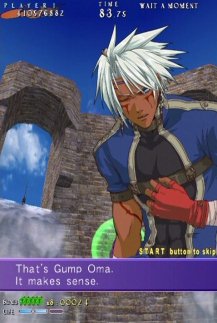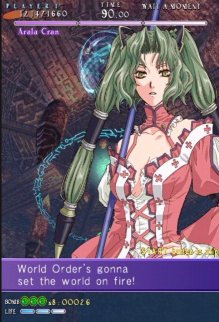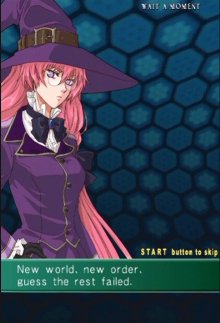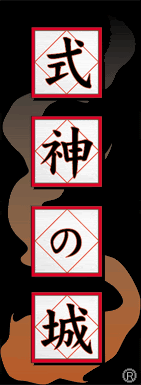
By Christopher J. Snelgrove
|
Alfa Systems is far from a household name as far as Japanese game developers go. Outside of a few PC Engine shooters like Download and Psychic Storm, and lightgun shooters like Elemental Gearbolt and Project Horned Owl, they've mostly been known for developing games for larger companes, like the TG-16 CD versions of Ys Book I & II for Hudson, and the Tales of the World series for Namco, amongst many others. However, they gained some small level of fame with their Shikigami no Shiro (Castle Shikigami) series, a trilogy of overhead bullet hell shooters. For the most part, Castle Shikigami is their flagship series. It has two sequels, has appeared on almost every console from the PS2 to the Dreamcast to the Gamecube to the PS2 to the Wii to the 360, and a massive cast reaching into the dozens, with a convoluted plot that even their staff are unlikely to fully comprehend. Not that this really matters, as Castle Shikigami is a shmup, and nonsensical plots are practically the norm for the genre.
Similar to Cave's ESP Ra.De and Espgaluda, you control humans who can fly through the skies. The landscapes are all 3D, but the ships and enemies are made of a combination of sprites and polygons. They're not exactly visually impressive and they lack the gorgeous spritework of Cave's games, but they have their own unique feel to them.
Each Castle of Shikigami game contains a number of playable characters, each with drastically different powers and weaponry. Each player also has their own story mode, where the hero and bosses exchange taunts before fighting. The different playing methods lend a lot of Shikigami appeal, because not only do they have plotlines and endings, but each has their own distinct scoring stragies. The game requires that you play through the game as a single character, forbidding you from switching after dying.
There are two main types of attacks:
Standard Attack
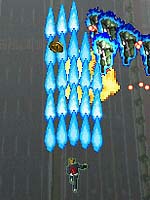
The normal pattern fire. Enemies release coins freely, which have to be gathered by the player. These attacks double in intensity if the player grazes enemy fire, meaning their shots are immediately next to the player's hitbox, similar to "buzzing" from Skonec's Psyvariar. This is called the Tension Bullet System, or "TBS". The hitbox is usually the very center of the character sprite, and they can not die unless it is struck, making it possible to weave through insane amounts of oncoming shots. However, rather than this being the focus of the gameplay, like Psyvariar, it's something you can take advantage of to win boss battles quicker and reach for higher scores. It's a brilliant risk-reward system, even though it involves squinting at the screen to figure out exactly where your characters hitboxes are.
Special Attack - Shikigami
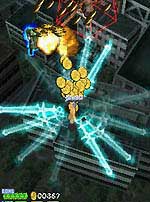
Uses spiritual power to bombard enemies. When killed, the coins go automatically to the player. This is usually done by holding down the fire button, as there are alternate buttons which can be held down for continuous fire.
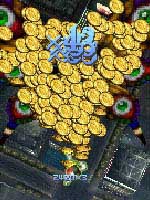
The closer the player is to enemy fire, the more coins they gain. If a player kills an enemy with a Shikigami attack while grazing, they'll gain up to eight times the resulting amount of coins. For scoring, it's best to use this against bosses.
Bombs

These are typical of bullet hell shooters. Some do high power destruction, some do more focused damage, but all briefly protect the player from enemy fire. The player gets anywhere from three to five.
|
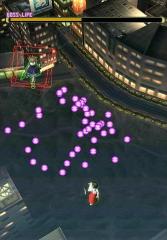
Shikigami no Shiro (PC)
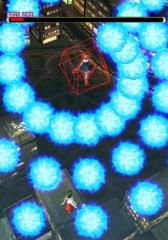
Shikigami no Shiro (PC)
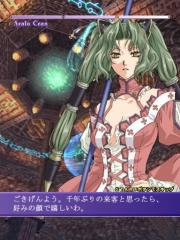
Shikigami no Shiro II(PC)
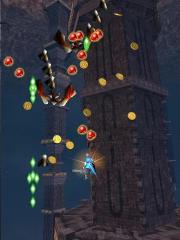
Shikigami no Shiro II (PC)
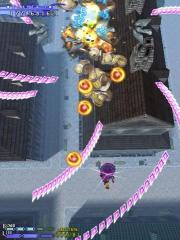
Shikigami no Shiro III (PC)
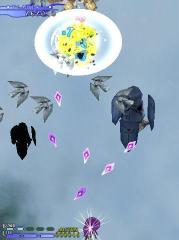
Shikigami no Shiro III (PC)
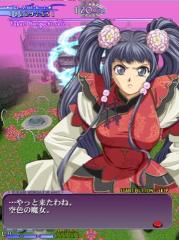
Shikigami no Shiro III (PC)
|
Shikigami no Shiro / Mobile Light Force 2 - Arcade / Playstation 2 / Xbox / PC (2002)
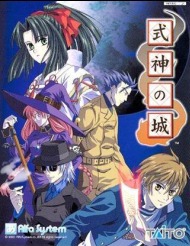
Japanese PS2 Cover
|
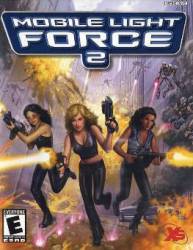
American Cover
|
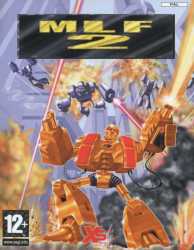
European Cover
|
|
The first Shikigami game takes place in the July 2005, the "near future". A number of victims have been found murdered, all of them female, seemingly electrocuted. After the 32nd killing, the attention of the Tokyo Metropolitan Police Department is finally gained. They begin an investigation, as do a number of persons drawn by the case's strong ties to the occult. What's always set Shikigami apart are the variety of playable characters. The first game offered six to choose from. The players arrive to stop the killers, while the bosses are either the killers themselves, or ghostly figures serving them.
If the player can stay alive long enough, the standard attack gets stronger with higher scores, at a maximum of Level 4. This is exclusive to the first game. Each stage in the first Shikigami game has two sections. After the first are two mini-bosses, each regarded as a section (2-2, 2-3) and at the end is the main boss. Before the beginning of each stage and during the boss fight, the characters either have a monologue or a dialogue, depending if they're alone or not. Everyone's dialogue is different. This game has no voice acting during the story segments, but there are various yells and shouts used in-game.
After its initial arcade release, Shikigami no Shiro was ported to the Playstation 2 and Xbox. Taito published the Playstation 2 version, as well as distributing the arcade version. The Xbox version, published by Media Quest, is dubbed Shikigami no Shiro Evolution and was released in two separate versions. The Red version included an art gallery while the Blue version contained developer interviews. There's also a new Evolution mode which revises some of the game elements. There are also Windows versions of all three Shikigami games.
In 2003, small budget publisher XS Games licensed two Japanese shooters for American release - Gunbird for the Playstation and Shikigami no Shiro for the Playstation 2. They dubbed the games "Mobile Light Force" and "Mobile Light Force 2", respectively. Adding insult to injury, it used the same cover as Mobile Light Force on the PS1, showing a trio of girls with guns that has nothing to do with the actual game. (The European version is just as bad, showing robots that also don't have anything to do with the actual game.) Gunbird had all of the cinemas and bonus material hacked out, plus some of the characters names were changed to staff members of XS Games. This game had all the dialogue or story segments cut out, and any sign of there being unique characters outside of the sprites and select screen portraits were removed. All of the Japanese voices redubbed with indecipherable speech which appears to be English. Furthermore, the Shikigami attacks were renamed "Mobile Light Force 2" attacks in the manual. Both also had their tate options removed. Still, they were both released dirt cheap ($10 for MLF1, $15 for MLF2), so even though they were butchered, they were still decent buys for starved shooter fans.
MP3s Download here
|
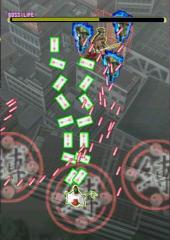
Shikigami no Shiro (PC)
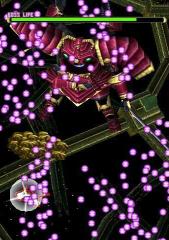
Shikigami no Shiro (PC)
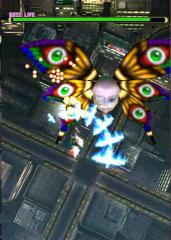
Shikigami no Shiro (PC)
|
Characters
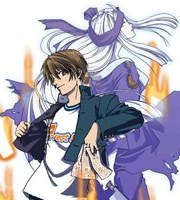
|
Kohtaro Kuga & Zasae
Kohtaro is a detective with the Metropolitan Police, assigned to the case. His special attack uses a spiritual familiar named Zasae who accompanies him everywhere, whether he likes it or not.
|
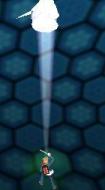
|
Bosses
Castle Shikigami 2 - Arcade / Playstation 2 / Dreamcast / Xbox / Gamecube / PC (2003)
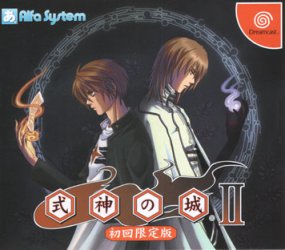
Japanese Dreamcast Cover
|
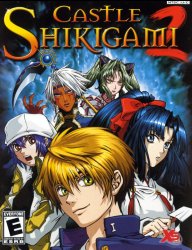
American PS2 Cover
|
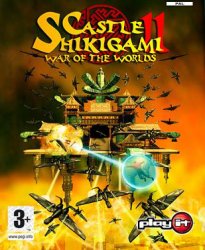
European PS2 Cover
|
|
Two years after the first game's release, Alfa System created a sequel that brings back the investigators from the first game, with a few new faces. It originated in arcades, and was eventually ported to just about every popular console at the time.
Much of the core gameplay is unchanged. The Tension Bullet System where grazing bullets earns you extra points and firepower is still intact, as are the Shikigami and bomb attacks. Each of the playable characters no longer have upgradable firepower, but to make up for it, they each have two varieties of special( Shikigami) attacks to choose from. The returning characters' normal attacks are unchanged, aside from that they can no longer be powered up like in Shikigami 1.
What gives Shikigami 2 extra replay value is that every single character has a unique storyline path when played with a second character , offering incentive to take on the game with a friend, if you want to see how crazy the shared stories can get. (Very crazy, in fact.)
Shikigami no Shiro 2 was originally released in the arcades, first ported to the Gamecube, then later released for the Dreamcast, Playstation 2, Xbox and PC. Each version had different limited edition packages - the DC version included a soundtrack, the Gamecube version had a figure of a cat, and the Playstation version had a figuring of the Witch, Fumiko. Only the Playstation 2 port made it outside of Japan, under the name "Castle Shikigami 2", courtesy of XS Games in American and Play It in Europe. The home versions include a very nice art gallery, complete with high-res artwork. It also included new modes of play with extra enemies and an 'Extreme' Mode in which enemies leave behind bullets after dying, for even more difficulty. There's also an arrange BGM option with remixes of Castle Shikigami 1's OST used in place of Shikigami 2's.
This time XS Games treated the game with far more respect, as most everything is faithful to the Japanese version. The packaging actually advertises the game for what it is - a shmup with anime-influenced characters blowing up stuff. Even the tate option is still present.
However, this is easily one of the worst translations in the history of video gaming.
Unlike its predecessor, Castle Shikigami 2 includes full voice acting, and All the mid-stage dialogue is completely spoken. These have been translated and dubbed for the English localization, but none of it makes sense, at all - presuming that the dialogue was Babelfished is an insult to online translators everywhere.
A few choice adages:
"...I like girls, but now, it's about justice.">
"You have two choices: beaten then caught, or caught then beaten."
"Beat 'em down then jump. I just started now."
Furthermore, the voiceovers are all done by people who obviously have no acting talent whatsoever, and seem to be confused that what they're reading is even English. (Check out Audio Atrocities for full dialogue clips.) At least the in-game voices were kept in Japanese. Purists will definitely cringe, but it's definitely worth checking out for the comedy value alone. What might come as surprising is that the dialogue itself is not a bad translation at all. Quite the opposite. The Japanese version's dialogue was just as senseless, if not more so.
XS Games was just a little too literal in their translation treatment. Unfortunately it seems like these were all excised completely from the European release.
The dialogue wasn't the only aspect of Shikigami 2 that received a weak treatment. Even the instruction book looks like it came from the result of a literal translation. As a bit of an in-joke, the Shikigame attacks are now called "Mobile Light Force 3" attacks. It still manages to be informative, but you have to wonder if anyone at XS Games knows how to proofread their products before they go to publication. Fortunately, despite their lackluster efforts, XS deserve credit for bringing over the second game mostly untouched, and at an extremely cheap retail price of $10.
Castle Shikigami 2 has a lot going on in its story, but the bad translation work doesn't help much in the way of making any sense of it. Still, it has a lot to offer for series vets. A wide variety of stages and bosses alike, even more difficulty, and some nice music to go along with it. Even better for the US fans, this would be XS Games' last Shikigami endeavor in the states. A more deserving publisher would be the ones to get the rights to the next game in the series.
MP3s Download here
|

Game Name
|
Characters
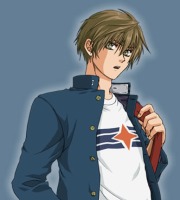
|
Kohtaro Kuga
The principal character of the series, a private detective of H&K Detective Agency, returns. His Shikigami, Sazae, is still in tow. Each form determines the nature of Sazae's attacks. She can either target the enemies closest to Kuga, or the ones closest to the point at which she was summoned.
|

|
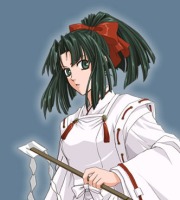
|
Sayo Yuuki
A shrine maiden from a strong religious home, she has never gone to school due to her upbringing. The new incidents have caused her to leave by train, and come to Tokyo. Sayo's special still consists of Phoenix familiar. It can either attack in a wide, slow radius(shown) or with a narrower(and faster) one.
|
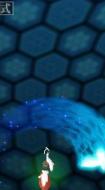
|
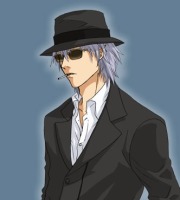
|
Gennojo Hyuga
A freelance detective serving the same agency as Kohtaro, Hyuga & Kuga. (Who owns the agency is anyone's guess.) He's working on the case at the request of a young client,and also has access to black market contacts. Due to having the blood of a wolf god, he becomes a werewolf when enraged. His Shikigami attack can either be used in the form of three lightning spheres with a long frontal reach, or six used forward and back, with a shorter reach.
|
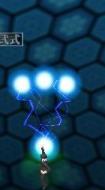
|
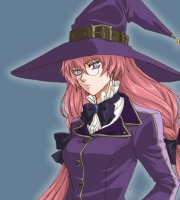
|
Fumiko Ozette Van Stein
The witch with the golden gun returns, and she still intends to marry Kohtaro. A German who migrated to Japan, she follows Kuga's trail to put a stop to the events before they can harm her would-be husband. Her Shikigami attack consists of orbital bombardments summoned by Munchausen, her butler. He can either bring down one massive blast, or a smaller assortment of five connected blasts.
|
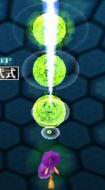
|
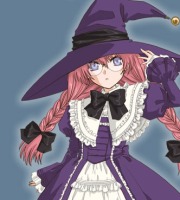
|
'Chibi' Fumiko
Fumiko in a younger form, supposedly the result of a spell gone badly awry. 'Chibi' Fumiko has the same attacks, and almost the exact same dialogue, just with a younger voice. She can be selected by moving the cursor continually to the right while highlighting Fumiko. Her normal shot is weaker, however, her Shikigami attack is much more powerful to compensate.
|
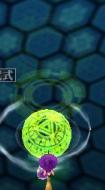
|
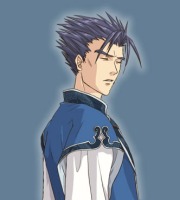
|
Kim De John
A Korean Tae Kwon Do instructor, he closed his dojo and left his country to avenge the murder of one of his students. His Shikigami attack can either be used as two controllable swords(which can be aimed anywhere from forward to back), or three swords which spin at fixed points.
|
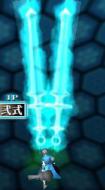
|
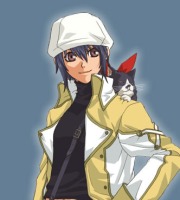
|
Niigi G.B. (Gorgeous Blue)
One of the two new characters, a mysterious girl seeking an unknown man. Her Shikigami attacks utilize her cat as a barrier, which then fires back at enemies with the charged up energy. Her normal fire pattern consists of static lasers fired from two spheres at her sides.
|
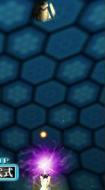
|
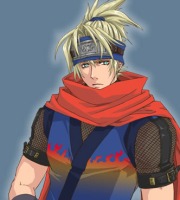
|
Roger Sasuke
The other new character. An American ninja, formerly a friend of Kohtaro, he now considers him his rival. He loves Japan. He uses a very fast string of shuriken attacks for his normal shots.
|
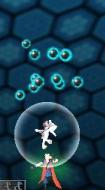
|
Bosses
According to the few bits of the translation that make sense, the bosses are all members of a group called the "New World Order".
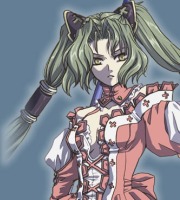
|
Arala Cran (Stage 1)
A ghost of a warrior. Flirtatious to a fault, she seems to have bad blood with Fumiko.
|
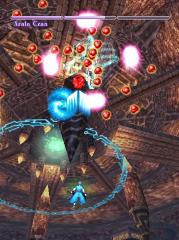
|
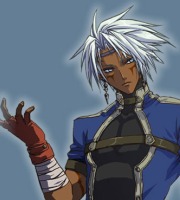
|
Anolegos Dundeon (Stage 2)
A guardian of a shrine, he now guards the submerged part of the castle. He knows Sayo from somewhere, possibly her work as a shrine maiden.
|
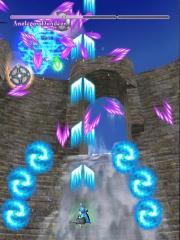
|
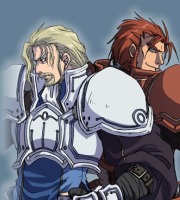
|
The Aja Brothers (Stage 3)
An older and younger brother, strong soldiers who gained immortality by guarding the castle. They will never stop fighting.
|
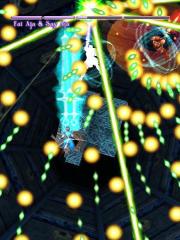
|
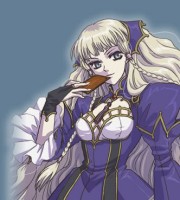
|
Yukari Horiguchi (Stage 4)
The last guardian of the castle, she is actually hospitalized in the real world. She attacks with (lots of) cards. If she is defeated, maybe she'll wake up in the real world.
|
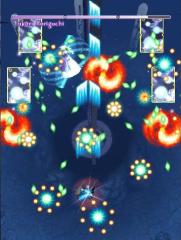
|
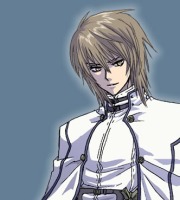
|
Shintaro Kuga (Final Boss)
The head of the New World Order, and Kohtaro's older brother. He believes his way is just, and should be the one to rule the world. After his demise, he takes another form, presumably the core of the New World Order.
|
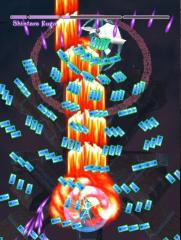
|
English Screenshots
Shikigami no Shiro 3 / Castle of Shikigami 3 - Arcade / Wii / Xbox 360 / PC (2006)
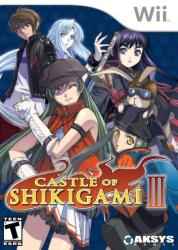
American Wii Cover
|
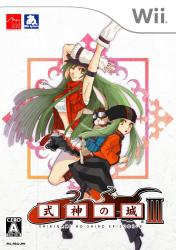
Japanese Wii Cover
|
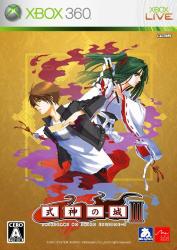
Japanese 360 Cover
|
|
Three years after the arcade release of the second Shikigami game, the third episode made its debut in 2006 .For a series known for having convoluted and even incomprehensible plots, Shikigami 3 takes it up a notch higher. Rather than Japan, Castle of Shikigami 3 (as the US version is known) takes place in the fictional Middle European country of Alcaland. Alcaland commonly handles its own business, and prefers to operate away from the outside world. As it has little economic worth and is widely desolate, few other governments have any interest in theirs. While Alcaland has its own borders, it must thrive on electricity and support from neighboring countries to operate. When a rash of disappearances and comatose victims begin occuring, Alcaland is forced to cease their isolation and seek outside assistance.
After consulting some 20-year-old documents showing their talent for investigations, the Princess of Alcaland came to the conclusion that Japan would be the right country to turn to. She also considers this to be an appropriate move on Japan's part, to replay Alcaland for their services in the past. (Reportedly consisting of a single armed yacht sent to Japan's 'aid' during the Russo-Japanese war.) Although it was a matter of much contention in the government, Japan eventually agreed on allowing The Association for Psychic Studies to organize a group to solve Alcaland's troubles. It isn't long before the organization recognizes the cause of the disturbances: the return of the infamous Castle of Nightmares.
Castle Shikigami 3 changes little from its predecessors, at a glance. The Tension System is unchanged, as are the normal shot/shikigami/bomb attack methods. However, it does include a few new gameplay mechanics. The Tension Max System allows a player to shoot at a High Tension rate of fire for a limited amount of time, at the cost of one bomb. Their attacks will then have the same amount of firepower as they would when grazing bullets. Additionally, all coins received during the Max Tension phase will be at the maximum multiplier (x 8).
For single players wanting to experience the two player story modes, Alfa System added a "Dramatic Change" feature. This allows one player to use two different characters, experiencing a two player story mode, with the ability to switch between the two players at will. Another welcome positive for Castle Shikigami 3 is that it finally received a proper localization, or at least the best a shmup can hope for. The Wii version was published in the US by Aksys Games, also known for publishing the later Guilty Gear and BlazBlue games in the US. They had planned to release the Xbox 360 version here as well, but were reportedly turned down by Microsoft. There's no real difference, outside of the HD visuals in the 360 versions, but it hardly matters since the game's not exactly a looker to begin with. Aksys made the best of it, and localized Shikigami 3's dialogue and voice acting with an appropriate mix of seriousness and outright insanity. According to their staff, the original version's dialogue was similar in tone, and didn't always make a lot of sense. Still, it wouldn't be a Shikigami game without a varied and eclectic cast.
MP3s Download here
|

Game Name
|
Characters
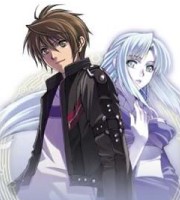
|
Kohtaro Kuga (with Sayo Yuuki)
Yes, the hingepin lead is back yet again. However, unknown circumstances resulted in the death of Kohtaro's former Shikigami, Sazae. In her stead, the shrine maiden Sayo Yuuki has taken her place. While Sayo's new look is the result of her taking Sazae's role, Kohtaro's comes courtesy of Fumiko Odette Van Stein, who designed the outfit for her (self-professed) betrothed. Though both are skilled investigators, Kohtaro and Sayo spend more time mired in lover's quarrels than doing much crime solving. It's also possible to use Sayo with her original shrine maiden look from Shikigami 1 & 2.
|

|
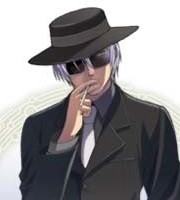
|
Gennojo Hyuga
Times have been hard for Hyuga. Not only is money tight, making him more desperate than usual, but his landlord is none other than the infamous witch, Fumiko. And when the rent is due, she expects her pay.
Much to Gennojo's ongoing terror, Fumiko expects payment in currency other than money.
|

|
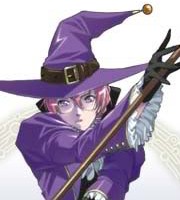
|
Fumiko Ozette Van Stein
Fumiko's gained an (even more) fearful reputation in the years since the last incident. Still accompanied by her faithful butler, this witch practically has something to hold over every cast member in the game. And she always gets her dues. In the meantime, she enjoys trampling on falling foes, claiming men, and destroying women she regards as a threat.
|

|
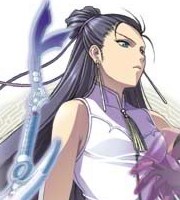
|
Mihee Kim
A travelling doctor from Korea, Mihee's reasons for visiting Alcaland are less than noble. As gifted with ending lives as she is with saving them, Mihee takes sadistic pleasure in killing. She is also seeking her cousin, Kim De John, for reasons unknown. Her attacks are the same as those of Kim's from the previous two games.
|

|
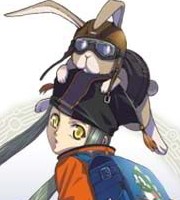
|
Nagino Ise
A fairly enigmatic girl, Nagino appears to be a carefree elementary school student investigating Alcaland for fun. She enjoys toying with Kohtaro and Gennojo's relationships, and calls them both 'papa'. (She addresses both Sayo and Fumiko as 'mama'.) Her rabbit is known as Strider, and goes everywhere Nagino does. Nagino is related to Niigi G.B. from Shikigami 2, and uses the same shot and shikigami attacks.
|

|
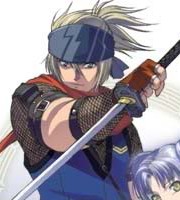
|
Roger Sasuke
A long-term friend of Kohtaro's, Roger insists on heading overseas to assist in the incident. Roger operates on his own dime, without the support(or likely the permission) of the Japanese government. Despite his questionable motives, his genuine ninja skills make him a talented investigator.
|

|
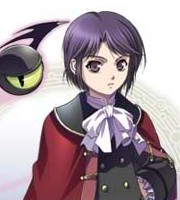
|
Emilio Stanburke
At the age of 10, Emilio is a member of one of the noblest families in Alcaland. He detests involvement in foreign matters. Emilio has the means to call demons to his side, a gift that runs in his family. Though he has a good personality at heart, he tends to look down on commoners. Emilio uses one of the completely new playing styles. His normal shot automatically homes in on enemies. For his Shikigami attack, he can generate a laser at any fixed point and direct its path by moving, or create one in a straight line, which will follow his movement.
|
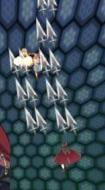
|
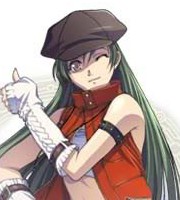
|
Reika "Time Gal" Kirishima
A police officer from the distant future, Reika has traveled to the past at the request of her boss (none other than Fumiko) to help solve the mysteries of Alcaland. Known to most as "Time Gal", Reika is as careless as she is carefree, and tends to cause more problems than she solves. If her name sounds familiar, it should - she starred in her own laserdisc arcade and Sega CD game, officially licensed for her appearance in Castle Shikigami 3. Reika has one of the most beginner-friendly firing patterns in the game. Her normal shot has a wide radius, and her Shikigami attack consists of constantly firing lasers. They're fairly weak, but fast and effective. To compensate, her bomb isn't really a bomb at all, but a time stop. It temporarily freezes all action on screen. In addition, this gives Reika an ability no other player has: she can destroy frozen shots of all kinds during her time stop ability.
|
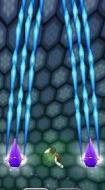
|
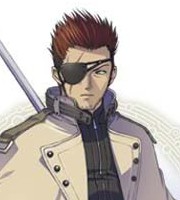
|
Batu Hirai
A brooding exorcist hired by Emilio. Batu simply wants to get in, get the job done, and go, and tires of Emilio's nationalism. He enjoys hard liquor.
Batu's normal shot is similar to Roger's, though with a wider radius. In addition, they circle around him before firing. His Shikigami attacks must both be charged up. One takes the form of a focused forward blast, while the other uses his staff in a circular manner.
|
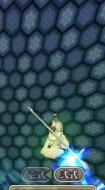
|
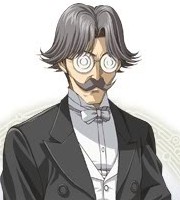
|
Munchausen
The ever loyal butler of Fumiko finally gets his chance to shine. Courteous and proper to no end, Munchausen proves he's just as much a force to be reckoned with as the rest of the investigators. His noble appearance conceals a fiery nature. Munchausen's attack pattern is very similar to Fumiko's, except she provides the bombardments of his Shikigami attack. He's a hidden character in the PC version, but is available immediately on the US Wii version.
|

|
Bosses
It's been said that the adversaries found in the Castle are generated based on the memories of its visitors. This proves especially true with Shikigami 3's bosses.
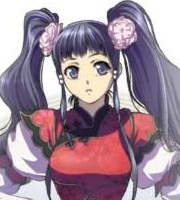
|
Yukari Horiguchi (Version 2) (Stage 1)
Yukari's the first Shikigami boss to ever live to make a second appearance, and with a much different look. Her personality is much flightier this time around, and as she was 'promoted' to being the first stage boss, she's the easiest to defeat.
|
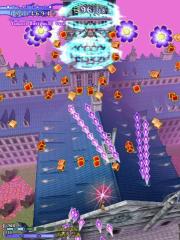
|
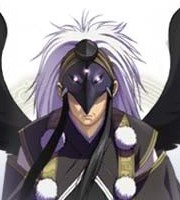
|
Shikou Mibuya (Stage 2)
The guardian of the second level's waterways, Mibuya is a devout warrior who has ties to Sayo; much like Dundeon from Shikigami 2.
|
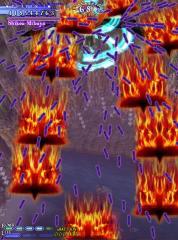
|
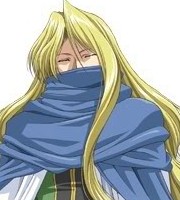
|
Freedom Wind (Stage 3)
A mysterious woman who, according to Fumiko, can be nothing more than a ghost; as she died by Fumiko's hand. She was Fumiko's stepmother, and killed by her in a conflict over a man.
|
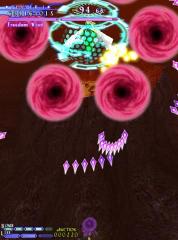
|
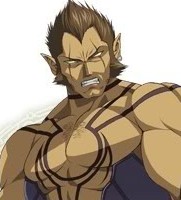
|
Kagachi (Stage 4)
A violent werewolf, with a fighting style reminiscent of Gennojo's. One of the toughest bosses in not just the third game, but the entire series. He sounds a lot like Seth from Street Fighter IV.
|
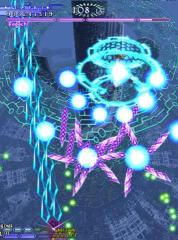
|
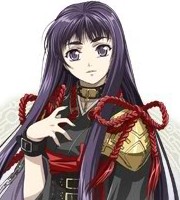
|
Tsukiko Johjima (Final Boss)
A childhood friend of Kohtaro's, betrothed to him at an early age. She has been bedridden in a hospital for many years. Is it really her, or something worse? She also has a key role in the PS2 text adventure based on the series, though she acts much colder here. The final fight in Shikigami 3 is a thorough affair. Tsukiko has not one, not two, not three, but four final forms. The third form takes the longest by far. It consists of a lengthy firefight with the exterior of what's best described as a massive living battleship.
|
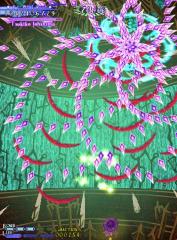
|
On to Page 2
Back to the index














